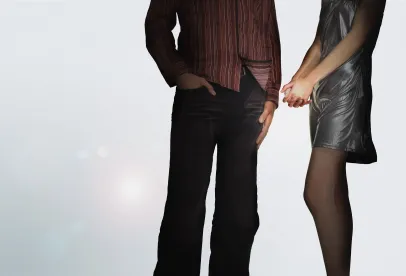Since the first major fashion documentary featuring designer Isaac Mizrahi, “Unzipped,” made its debut in 1995, the popularity of fashion documentaries has only gained traction. Within the past five years, a smattering of renowned brands, including Marc Jacobs, Louis Vuitton, and Valentino, as well as some fixtures in fashion like Anna Wintour and Diana Vreeland, have allowed cameras to capture their exclusive world of fashion through their respective documentaries. More recently, James Franco, the former face of Gucci, steered his production company toward a collaboration with Gucci’s creative director Frida Giannini, creating the documentary entitled “The Director: An Evolution in Three Acts.” The film, which debuted last spring at the Tribeca Film Festival, documented how a Gucci collection comes together. Even retailers are following suit, with documentaries such as director Matthew Miele’s “Scatter My Ashes at Bergdorf Goodman,” which features the history of New York’s famous luxury department store, making their way to audiences.
While fashion documentaries have yet to garner the same level of commercial appeal as the level attained by certain political and/or topical documentaries, the fashion industry’s elite players seem eager and willing to demystify their creative process on-screen. The value, while not necessarily directly realized through documentary distribution proceeds, may indirectly be realized through marketing. In the same vein as fashion film shorts, full-length fashion documentaries blur the line between film and advertisement for the brands upon which the films are based. (See Victoria Lee and Ted Max, Fashion Film Art Movement, Fashion and Apparel Law Blog, June 14, 2012).
Yet tension may exist between the desire of fashion houses and designers to promote their brands in a particular light, and documentary filmmakers’ desire to capture the provocative truth, whether positive or negative. Even when the filmmaker has a vested interest in the brand’s success, it may have a particular point of view which is not in line with the brand’s marketing goals. Therefore, when contemplating whether to pull back the curtain for the cameras, it’s important for a fashion brand to consider all the potential issues which may arise from the release of a fashion documentary featuring the brand and to preemptively address these potential issues during contract negotiations with the filmmaker involved with the project.
Certain contractual limitations on the filmmaker, such as those affecting access granted to production crews and approvals and controls over aspects of the documentary’s development and production, may be negotiated as precautionary measures for the brand to ensure the documentary serves its purpose as a marketing tool. As “Bergdorf’s” director, Matthew Miele noted in a press release, while his film could come across as overly promotional, he noted that he retained control over its contents, working closely with Bergdorf Goodman during the post-production and editing process.
Based on the flurry of fashion documentaries slated to be released this year, including films profiling Stanley Marcus of Neiman Marcus, New York fashion icon Iris Apfel, and Miele’s look at Tiffany & Company, fashion documentaries appear to continue to serve a valuable marketing purpose. No doubt with the right filmmakers attached to a fashion documentary project, a fashion brand can use the finished product to increase its presence as global powerhouse, both on- and off-screen.


 />i
/>i

